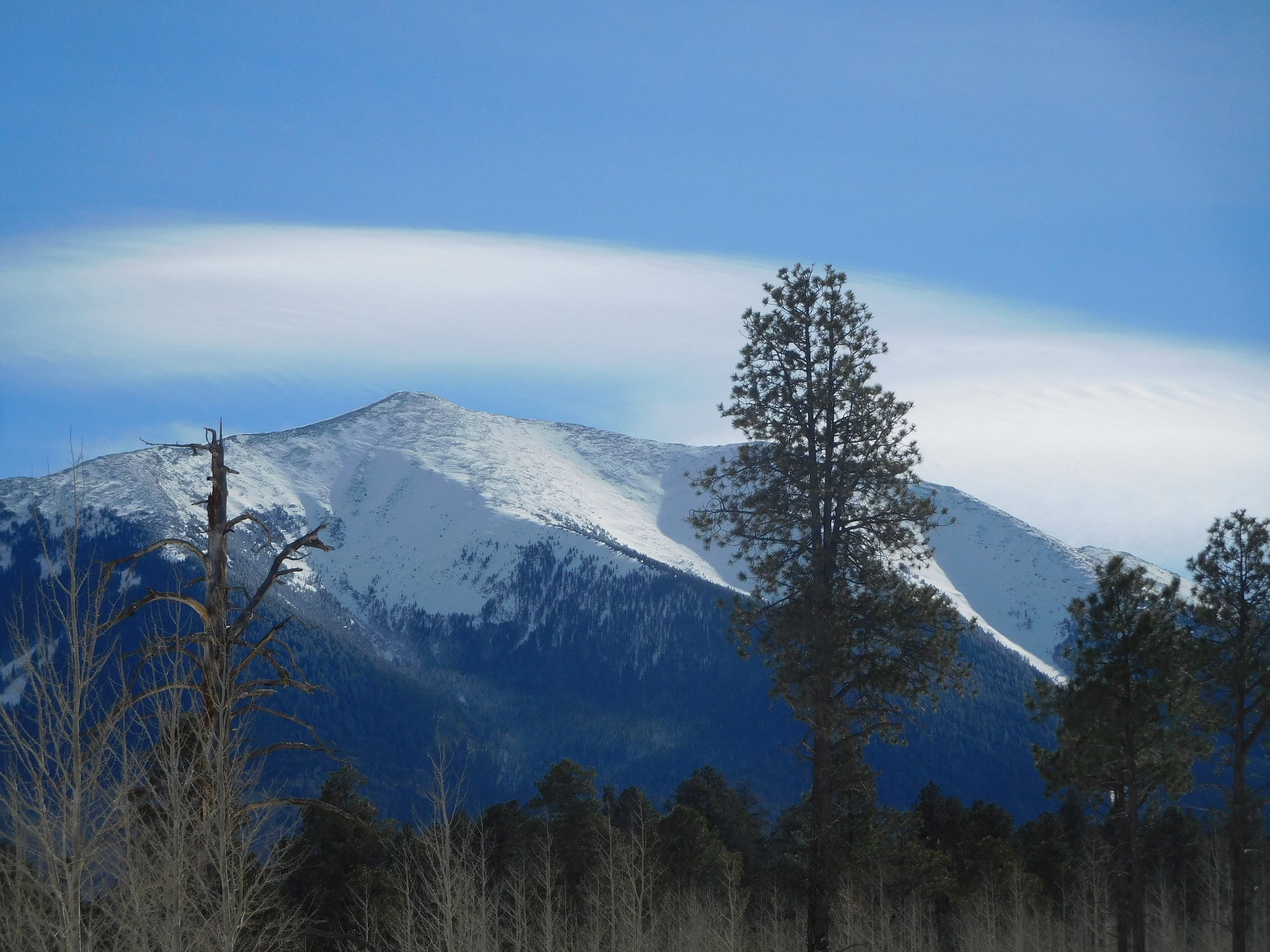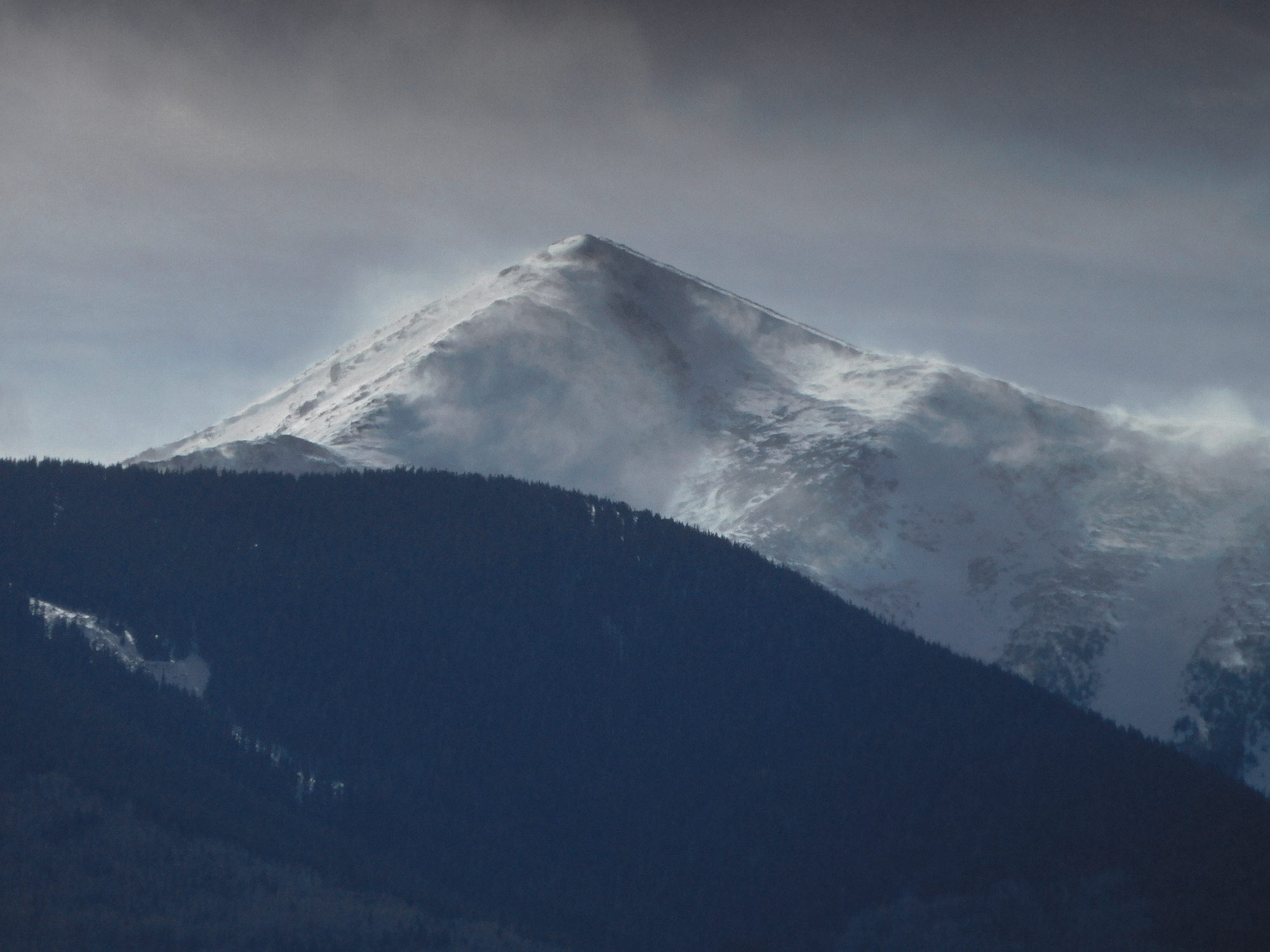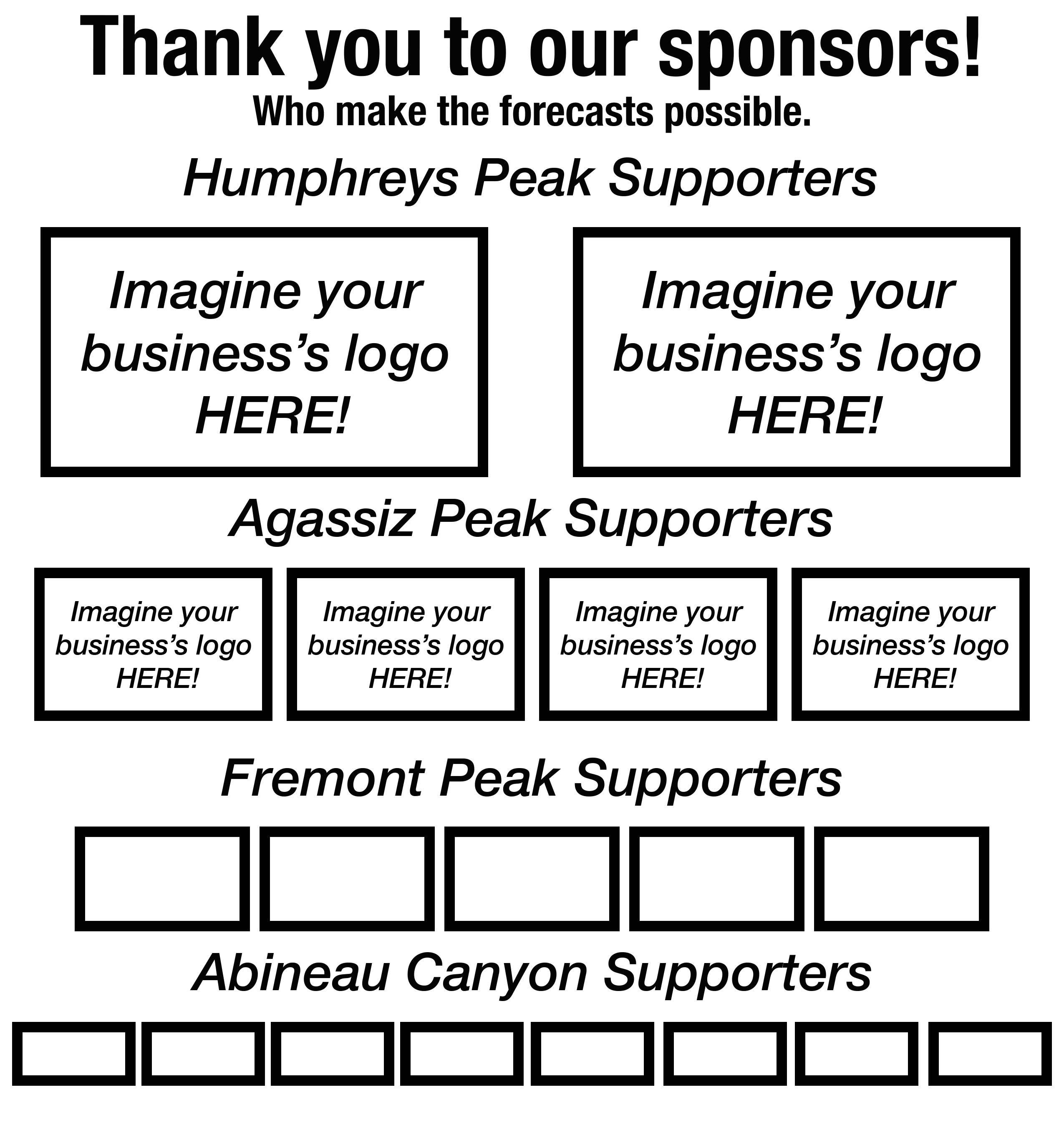Snowpack Summary for Friday, December 7, 2018 11:38 AM Winter has arrived on the San Francisco Peaks!
This summary expired Dec. 09, 2018 11:38 AM
Flagstaff, Arizona - Backcountry of The San Francisco Peaks and Kachina Peaks Wilderness
The latest storm, which arrived on Thursday afternoon December 6th, has thus far dropped relatively modest amounts of snow (4-5 inches at 10,800 feet). Lesser amounts were recorded at lower elevations. The snow line is at 7,500 feet. The new load would not be alarming on its own; however, moderate winds out of the southwest have been sufficient to transport new snow creating a potential concern.
On steep wind loaded slopes, skier triggered avalanches are possible. Size and destructive potential of such avalanches will be highly variable. Old faceted snow is hidden at the bottom of the snowpack on north and northeast aspects at high elevations. Smaller, less destructive avalanches may occur due to insufficient time for new wind slab from the most recent storm to bond to the snow below.
Starting zones will generally be near and above treeline on wind loaded slopes and sidewalls of gullies. Wind loaded zones could exist on a variety of aspects, because winds following last week’s storm cycle blew out of the north and east for a period of time. Overall, keep an eye out for snow pillows, indicating snow loading, and slab formation. Whumpfing or cracking of slabs are indicators of instability. Stay clear of these features and moderate slope angle to below 30 degrees.
Early season skiing and riding can be particularly dangerous as overzealous enthusiasm leads to poor decision-making. Give the new snow time to bond to the snowpack below. Also, snow coverage above treeline is highly variable. Hidden rocks and other obstacles may be present. Ski with early-season caution and awareness in order to enjoy the rest of the winter, once coverage improves.
Current Problems (noninclusive) more info

Images

NW side of Humphrey's Peak. From left to right: Lew Canyon, Philomena Springs (Little Sister) Bowl, and Allison Clay Bowl.
Dec. 4th 2018 photo by Troy Marino.

On Dec. 5th. 2018, we observed wind loading of starting zones in the northeasterly avalanche paths of Abineau Canyon.
Photo by Troy Marino.
Final Thoughts
https://www.rei.com/event/avalanche-awareness/flagstaff/226586?cm_mmc=sm_fb_76515-_-flagstaff-_-opo_field-_-event_reg
Backcountry permits are required for travel in the Kachina Peaks Wilderness and available at local USFS locations, as well as, at the Agassiz Lodge on Saturday and Sunday 8:30 -11:30 a.m.
Uphill travel on terrain within the Arizona Snowbowl ski area is still closed. Please refer to www.flagstaffuphill.com and https://www.snowbowl.ski/the-mountain/uphill-access/ for details. Access to the Kachina Peaks Wilderness is available from the lower lots at Snowbowl via the Humphreys Trail and Kachina Trail.
Weather
Over the past 48 hours, winds have been moderate out of the south-southwest, 10-20 mph; gusting to 30 mph. Wind velocities have been abating as the storm progresses. As the sky clears in the storm’s aftermath, cold basin temperatures and inversion fog may be present in Fort Valley and elsewhere on Saturday morning.
The upcoming week will bring generally drying and warming conditions with a chance for more precipitation midweek. At the time of publication, it was still too early to predict the timing, path, and precipitation potential of this approaching event.
On Friday morning December 7th, the Inner Basin SNOTEL site (Snowslide) reported a snow depth of 15 inches (38 cm) at 9,730 feet; and Arizona Snowbowl reported a settled base of 26 inches (66 cm) at 10,800 feet. So far this winter 41 inches (104 cm) of snow have fallen at the mid-mountain study site. Since November 30th, SNOTEL temperatures have ranged between 0°F on December 3rd, and 37°F on December 5th. For the same period, the AZ Snowbowl Top Patrol Station (ASBTP 11,555 feet) temperatures ranged between 2°F on December 3rd and 30°F on December 5th.
Authored/Edited By: Troy Marino, David Lovejoy, Derik Spice








